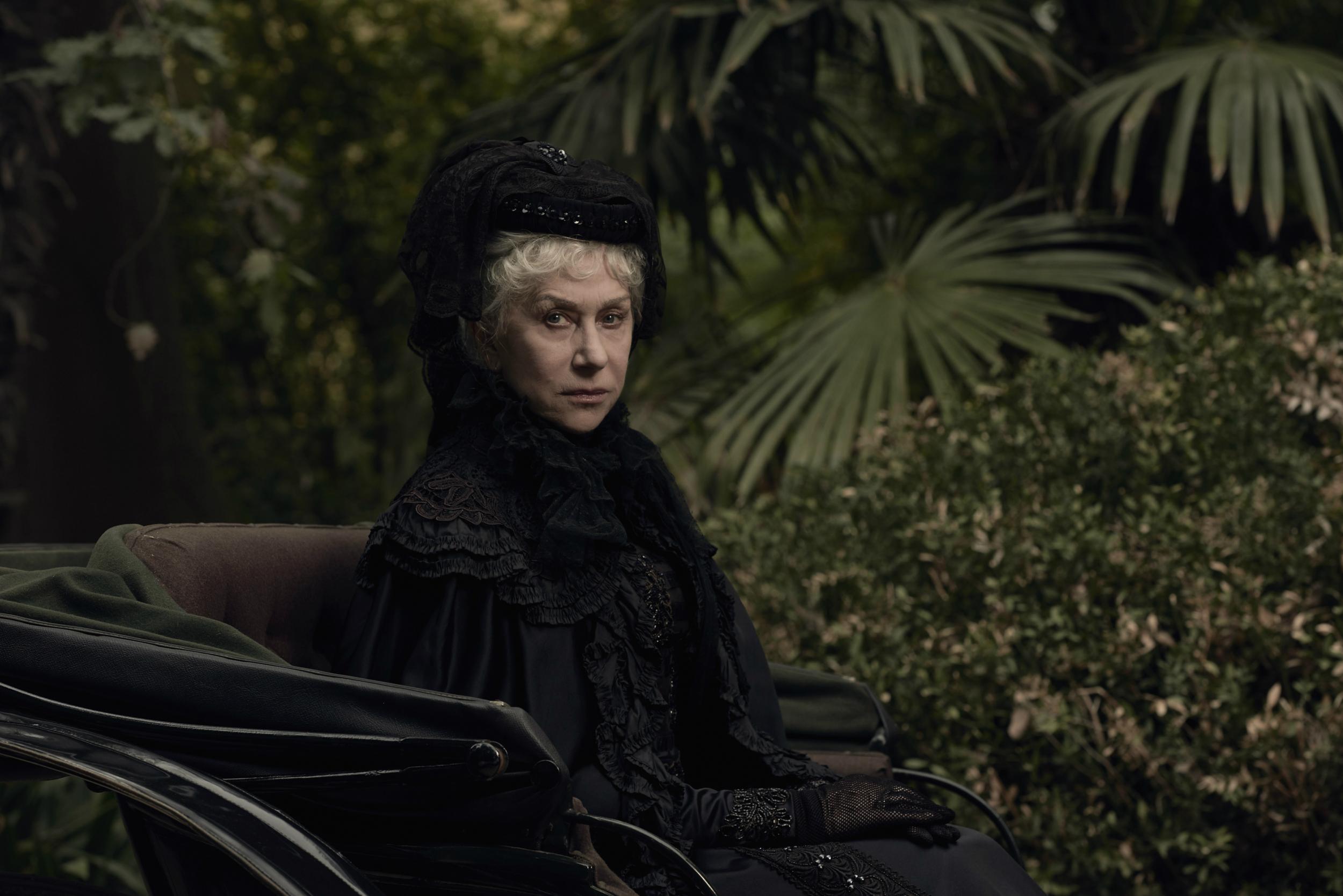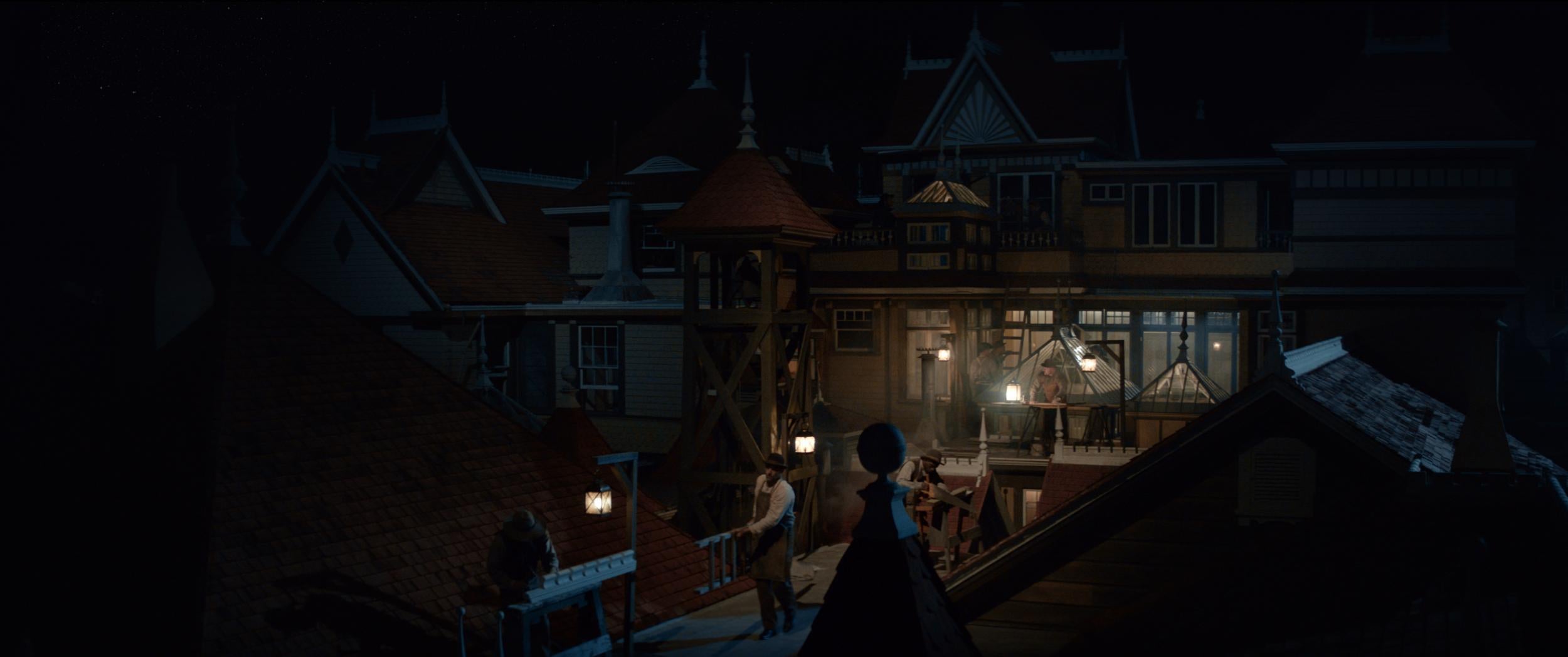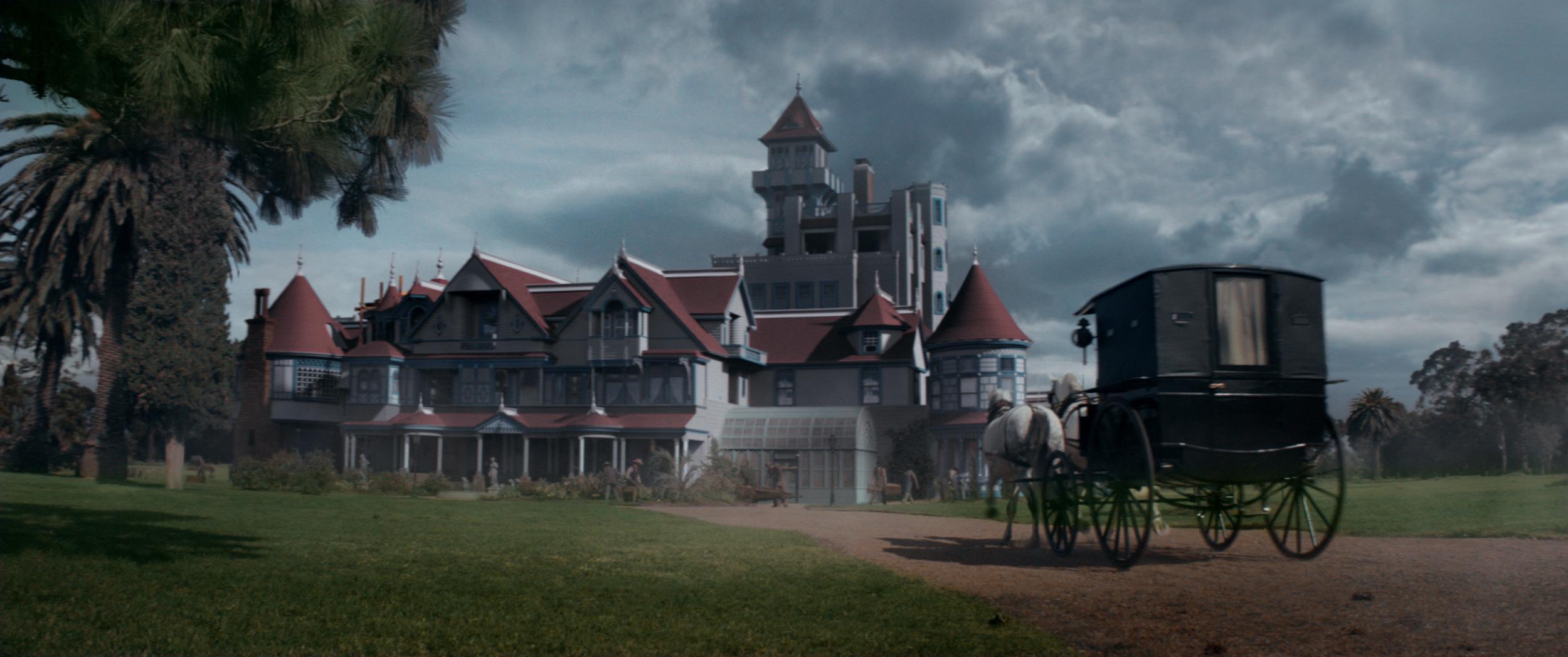The Independent's journalism is supported by our readers. When you purchase through links on our site, we may earn commission.
Winchester: How one of America’s most haunted houses inspired the Helen Mirren horror film
Sarah Winchester's fortune was built on death – but did those phantoms come back to haunt her?

Your support helps us to tell the story
From reproductive rights to climate change to Big Tech, The Independent is on the ground when the story is developing. Whether it's investigating the financials of Elon Musk's pro-Trump PAC or producing our latest documentary, 'The A Word', which shines a light on the American women fighting for reproductive rights, we know how important it is to parse out the facts from the messaging.
At such a critical moment in US history, we need reporters on the ground. Your donation allows us to keep sending journalists to speak to both sides of the story.
The Independent is trusted by Americans across the entire political spectrum. And unlike many other quality news outlets, we choose not to lock Americans out of our reporting and analysis with paywalls. We believe quality journalism should be available to everyone, paid for by those who can afford it.
Your support makes all the difference.Hauntings, in their essence, have folded neatly into the traditions of American folklore. They’re outlets for storytelling, and no haunting comes with a story quite as rich as that of California’s Winchester Mystery House, as conceived by one Sarah Winchester.
A tale of violence, grief, madness and guilt, it’s as if her life was torn straight from the pages of a Gothic novel, which makes it no surprise to see Academy Award-winner Dame Helen Mirren step into such tortured shoes for her latest horror film Winchester: The House That Ghosts Built.
Sarah Winchester was a woman possessed with brilliance, a child prodigy whose portfolio of talents covered literature, music and languages. In Connecticut high society, she swiftly earned the title of “Belle of New Haven”.
In 1862, she married William Wirt Winchester, whose father had acquired a vast fortune through the Winchester Repeating Arms Company, famous for manufacturing “the gun that won the West” – its use in the American Indian Wars making the Winchester company complicit in the Native American genocide.
William was left the company when his father died in 1880. It fell into Sarah’s hands only four months later, when William himself died of tuberculosis. Their only child, Annie, died at just 40 days. And so the image of the moneyed, reclusive widow wracked with grief begins to form: Sarah inherited $20m (equivalent to $507m or £361m now) and a 50 per cent holding in the Winchester Repeating Arms company, making her one of the wealthiest women in the world.
A fortune built on death. As the tabloids feverishly regaled, Sarah was convinced she’d become cursed by all the souls whose very last sight in this world was the muzzle of a Winchester rifle. She is said to have visited the infamous Boston medium, Adam Coons, only to return with the bizarre consolation that the spirits would be appeased if she moved out West and built a home not just for herself, but for the dead who haunted her. If construction ever stopped, Coons added, Sarah would die.
She moved to California in 1886 with her sister and niece, purchasing an unfinished, eight-room farmhouse in what is now San Jose. Work commenced immediately on the property and, as the legend goes, it never stopped: continuing 24 hours a day, seven days a week, 365 days a year, for the next 38 years.
The moment the builders heard of Sarah’s death, they immediately dropped their tools and walked away, leaving nails half-hammered into the walls. She left the house’s belongings to her niece, but there is no mention of the house itself in the will. Appraisers considered it worthless due to its bizarre nature and it was swiftly auctioned off. Within five months, it had already become a tourist attraction.
The result was a labyrinthine structure consisting of 161 rooms, including 40 bedrooms, two ballrooms, 47 fireplaces, 10,000 panes of glass, 17 chimneys, two basements, and three elevators. There was no architect, no master plan. Sarah would sketch ideas for new rooms, towers, or cupolas on pieces of napkins and brown paper, only for those additions to be plastered over the very next day. Servants required a map just to navigate the property.

Watch Apple TV+ free for 7 days
New subscribers only. £8.99/mo. after free trial. Plan auto-renews until cancelled

Watch Apple TV+ free for 7 days
New subscribers only. £8.99/mo. after free trial. Plan auto-renews until cancelled

The number 13 is also a frequent occurrence in the property (now thought largely to have been added after Sarah’s death): there are windows with 13 panes, 13 bathrooms, a chandelier altered to hold 13 candles, drain covers in sinks with 13 holes. A secret room is said to have been the location for nightly séances, in which Sarah would receive the next day’s building instructions from the spirits. An alarm would be run at midnight to welcome the ghosts in, then again at 2am when it was time for them to depart.
The house grew to an impressive seven stories, but the 1906 earthquake collapsed its highest tower and the top three stories, leaving Sarah herself trapped in one of the bedrooms for several hours. When she escaped, she told carpenters to abandon the nearly completed front facade of the house, believing the earthquake had been a demonstration of anger by the spirits. Sarah herself moved to nearby Atherton, and only visited the house periodically from then.
What exists today certainly justifies the property’s title of the Winchester Mystery House. Historians have struggled to differentiate what is intentional (reportedly a way to confuse the spirits), what exists through a total lack of planning, and what is the result of Sarah’s disinterest in repairing the earthquake damage – whatever the truth, it’s like stepping into an Escher painting. Doors open into walls, staircases lead to nowhere, windows look into other walls, a door opens onto a sheer drop of two stories, a skylight is built into the floor, tiny doors open into giant spaces, giant doors open into tiny cupboards, rooms exist inside rooms.

A playground for phantoms, so it would seem. The Winchester Mystery House’s pure strangeness has inevitably earned it the reputation as one of America’s most haunted houses. Still a thriving tourist attraction today, employees and visitors regularly report the old standards of paranormal activity: ghostly footsteps, whispers in the dark, slamming doors, windows shutting themselves so forcefully the glass shatters, cold spots, orbs, doorknobs that turn by themselves. Sarah’s phantoms? The widow herself? Or an enterprising fabrication that has made the house’s current owners a small fortune in ticket sales?
In truth, there is no record of Sarah having ever visited Adam Coons, no sign that she ever had spiritualist leanings or ever attempted to contact the dead. Mary Ignoffo, whose book Captive of the Labyrinth attempts to capture the reality of Sarah’s life, claims that her own letters dispel the myth that the property was constantly worked on, with her sending workers away for months at a time.
Janan Boehme, a historian who has worked at the house for almost 40 years, believes her reclusiveness was driven not out of madness, but by her severe arthritis and her shame over the fact she needed to wear dentures.
There are two stories of Sarah Winchester. One is of the mad widow, constructing more and more walls in the hope of losing her mind’s phantoms within them. It’s a thrilling story, but one that also seems to carry with it a grim metaphor for America’s gun culture, constantly on the run from its own bloodied hands.
The second tale is a little less phantasmagorical: Boehme tells the LA Times that Sarah may only have been trying to recreate happier times, when she and her late husband would oversee the construction of their Connecticut home. As it turns out, perhaps the only thing haunting Sarah was her own memories.
Winchester: The House that Ghosts Built is available to own on Blu-Ray and DVD from Monday 28 May.
Join our commenting forum
Join thought-provoking conversations, follow other Independent readers and see their replies
Comments